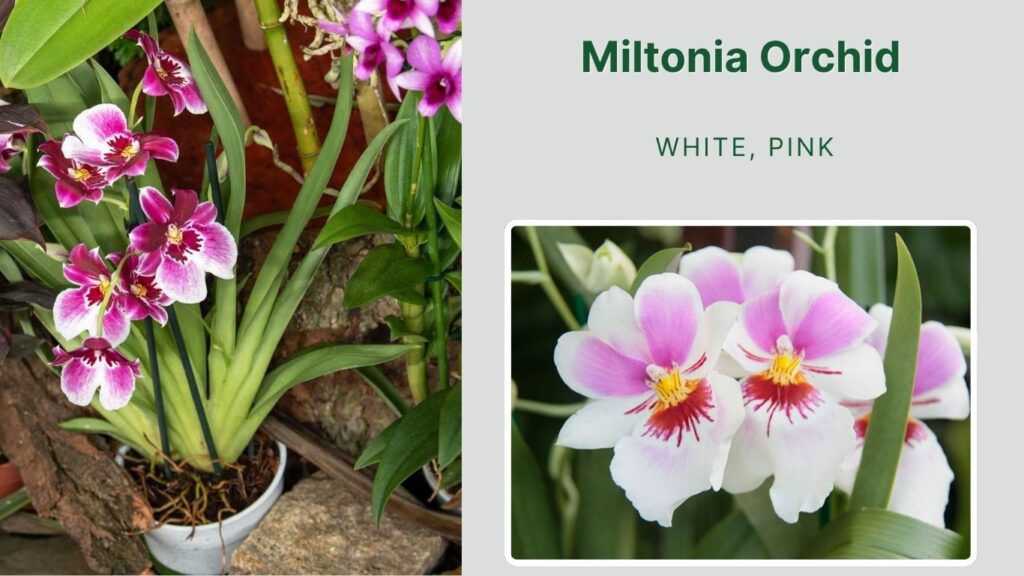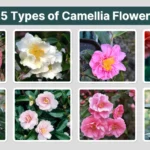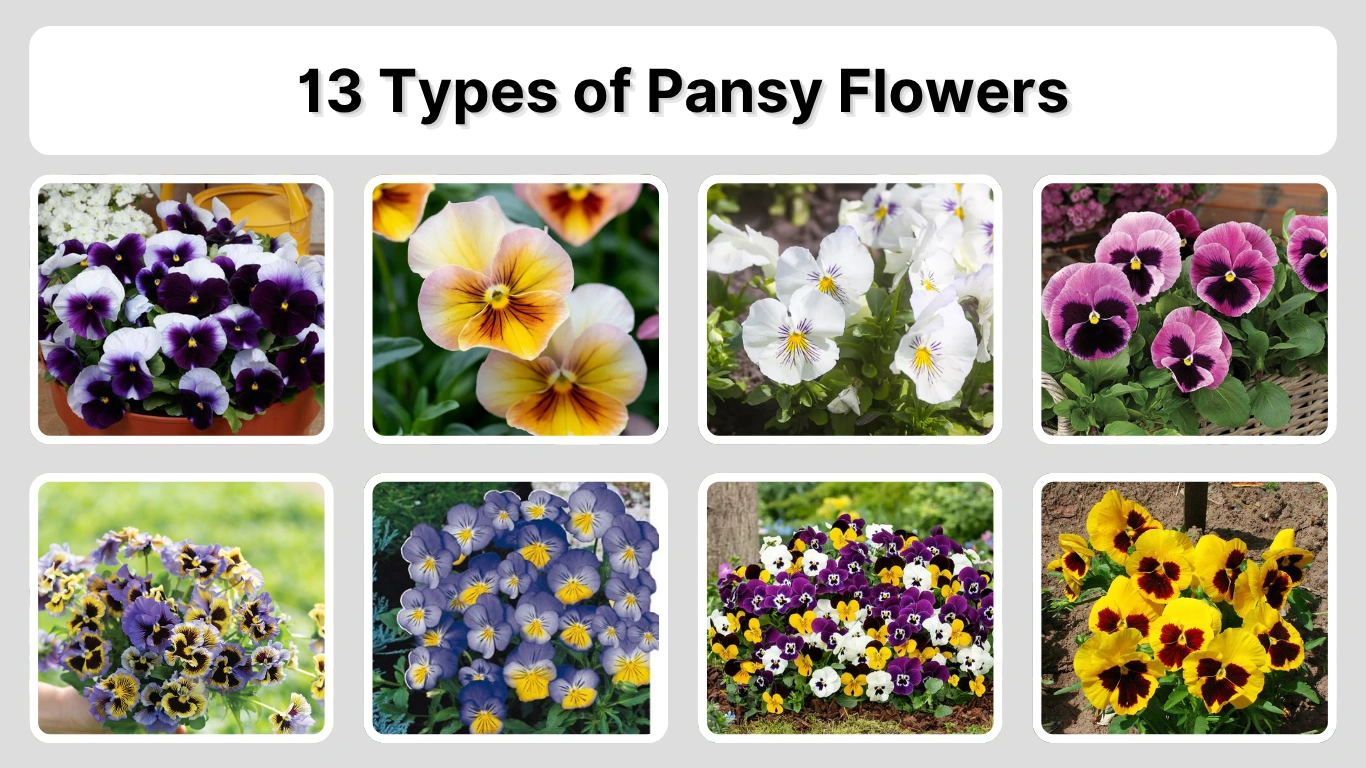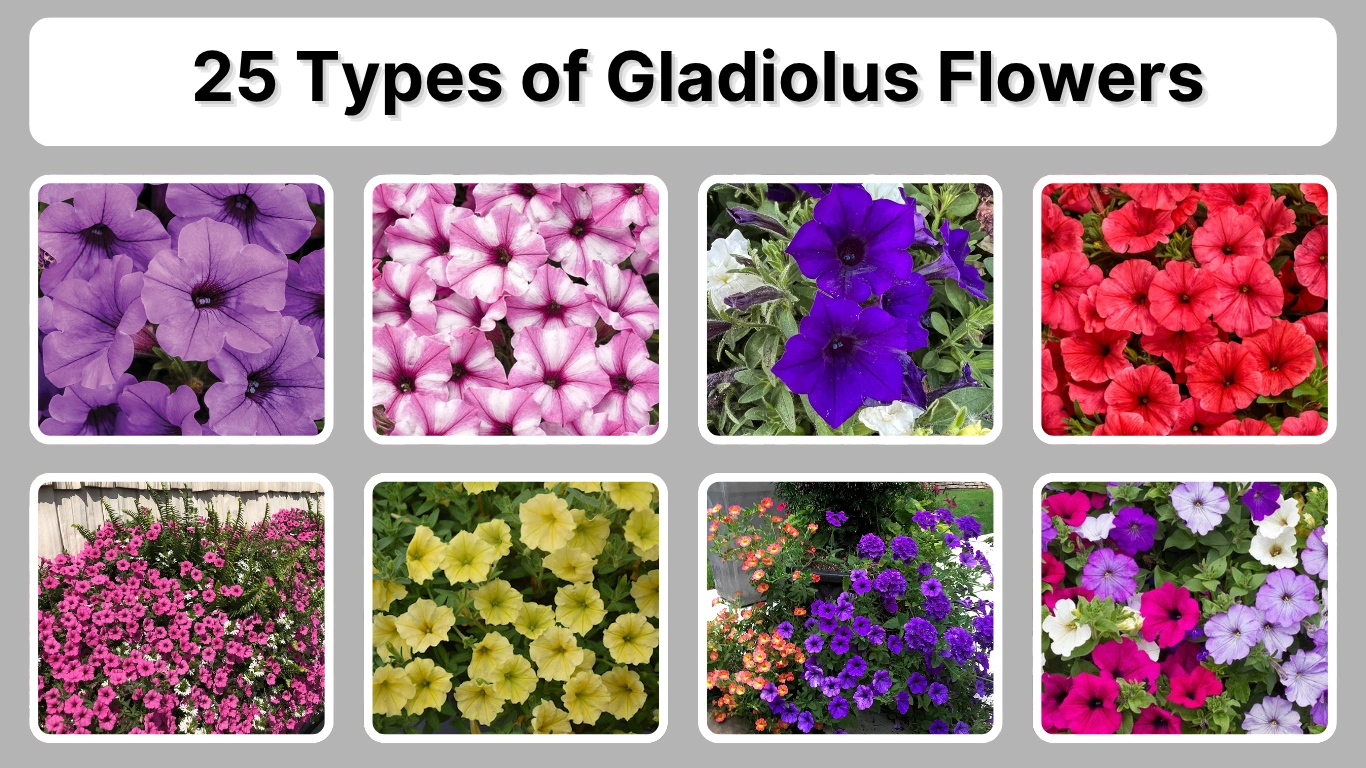Orchids are among the most diverse and captivating flowering plants in the world, with over 25,000 species and countless hybrids. They range from classic, easy-to-grow houseplants to rare, exotic varieties with striking shapes, colors, and fragrances. Whether you’re a beginner looking for low-maintenance beauty or an experienced collector exploring rare and unusual blooms, orchids offer something for every plant lover. In this list, you’ll discover 25 different types of orchids—each with its own unique charm and growing style—to inspire your next addition to the garden, windowsill, or greenhouse.
1. Phalaenopsis Orchid

Phalaenopsis, commonly known as the “Moth Orchid,” is one of the most popular and widely grown orchid varieties worldwide. Its elegant, long-lasting flowers and ease of care make it a favorite among both beginner and experienced growers.
Identification
- Color: White, pink, purple, yellow, striped, or spotted
- Flower Shape: Flat, broad petals resembling a moth in flight
- Bloom Size: 2–5 inches
- Plant Height: 12–24 inches
- Leaf Type: Broad, fleshy, dark green leaves
- Bloom Duration: Up to 3 months
Origin and Popularity
Native to Southeast Asia and Australia, Phalaenopsis orchids are loved for their graceful appearance and ability to thrive indoors. They dominate the commercial orchid market due to their long bloom period and adaptability to home environments.
Growing and Blooming Season
These orchids can bloom at any time of year, though they often flower in late winter to spring. They thrive in warm, humid conditions with indirect light. Regular watering and good air circulation are essential for healthy growth.
Companion Plants
Phalaenopsis pairs well with other tropical houseplants like ferns, peace lilies, and anthuriums. When grouped together, they create a lush, exotic indoor display.
2. Cattleya Orchid

Cattleya orchids are known as the “Queen of Orchids” due to their large, showy, and often fragrant blooms. These iconic flowers are widely used in corsages and floral arrangements, admired for their ruffled petals and rich colors.
Identification
- Color: Pink, purple, white, yellow, orange, bi-colored
- Flower Shape: Broad with frilled lips
- Bloom Size: 4–6 inches
- Plant Height: 12–24 inches
- Leaf Type: Thick, leathery, upright leaves
- Bloom Duration: 2–4 weeks
Origin and Popularity
Native to Central and South America, Cattleyas became famous in the 19th century and remain popular with collectors and florists. They’re treasured for their beauty, fragrance, and classic orchid form.
Growing and Blooming Season
Most varieties bloom once or twice a year, usually in spring or fall. They require bright, indirect light, moderate humidity, and good airflow. Allow the medium to dry slightly between waterings.
Companion Plants
Pairs beautifully with other sun-loving orchids like Laelia or Dendrobium. Also complements bromeliads and tropical foliage plants in greenhouse settings or decorative arrangements.
3. Dendrobium Orchid

Dendrobium orchids are a diverse group with hundreds of species, known for their upright canes and multiple small to medium-sized blooms along the stem. They’re hardy and easy to grow, making them common in homes and gardens.
Identification
- Color: White, lavender, pink, yellow, green, striped
- Flower Shape: Small and symmetrical; varies by type
- Bloom Size: 1–3 inches
- Plant Height: 12–36 inches
- Leaf Type: Long, narrow, deciduous or evergreen depending on species
- Bloom Duration: 4–6 weeks
Origin and Popularity
Native to Asia and the Pacific Islands, Dendrobiums are among the most cultivated orchids. Their wide range of colors and growth habits make them a versatile addition to any collection.
Growing and Blooming Season
Depending on the species, Dendrobiums can bloom once or multiple times a year. They prefer bright light, warm temperatures, and a brief rest period in cooler, drier conditions to encourage flowering.
Companion Plants
Often grown alongside Phalaenopsis and Cymbidium orchids. Their upright form contrasts nicely with ferns, begonias, and tropical vines in mixed plant displays.
4. Vanda Orchid

Vanda orchids are celebrated for their vibrant colors, striking patterns, and large, flat blooms. They are mostly epiphytic and often grown in hanging baskets, with roots exposed to air. Vandas are a favorite among collectors and tropical garden enthusiasts.
Identification
- Color: Bright blue, purple, pink, orange, yellow, and spotted varieties
- Flower Shape: Broad, round petals with a prominent lip
- Bloom Size: 3–5 inches
- Plant Height: 18–36 inches or more
- Leaf Type: Strap-like or terete (cylindrical) leaves
- Bloom Duration: 4–8 weeks
Origin and Popularity
Native to Southeast Asia, Vandas are prized for their rare blue hues and showy flowers. They’re highly regarded in orchid shows and tropical collections for their visual impact and striking root systems.
Growing and Blooming Season
Vandas can bloom several times a year under the right conditions. They need bright, direct light, high humidity, and frequent watering. Their aerial roots benefit from regular misting or soaking.
Companion Plants
Pairs well with other epiphytes like air plants (Tillandsia), ferns, and bromeliads. Hanging displays also allow for creative arrangements with mosses and driftwood for a natural look.
5. Oncidium Orchid

Oncidium orchids, often called “Dancing Lady” orchids, are known for their ruffled lips and sprays of tiny, cheerful blooms. These orchids are prolific bloomers and come in many colors, with yellow and brown being especially common.
Identification
- Color: Yellow, brown, pink, red, white, and spotted varieties
- Flower Shape: Small, ruffled lip resembles a dancing skirt
- Bloom Size: 1–2 inches
- Plant Height: 12–24 inches
- Leaf Type: Thin, long leaves with pseudobulbs
- Bloom Duration: 4–6 weeks
Origin and Popularity
Native to Central and South America, Oncidiums are popular for their light, airy sprays of flowers and ease of care. They’re often included in orchid gift arrangements due to their charm and long-lasting blooms.
Growing and Blooming Season
Can bloom once or twice a year. They prefer bright, indirect light, moderate humidity, and good air circulation. Let the potting mix dry slightly between waterings.
Companion Plants
Combine well with Dendrobiums and Miltoniopsis in mixed orchid displays. Their light flower spikes add movement and brightness to arrangements with leafy companions like calatheas or begonias.
6. Miltonia Orchid

Miltonia orchids, also known as “Pansy Orchids,” are admired for their flat, wide blooms that resemble garden pansies. With their soft fragrance and cheerful appearance, they bring a delicate charm to indoor orchid collections.
Identification
- Color: White, pink, red, yellow, and purple with distinct blotches or stripes
- Flower Shape: Round, flat, pansy-like
- Bloom Size: 2–4 inches
- Plant Height: 10–18 inches
- Leaf Type: Soft, light green, and arching
- Bloom Duration: 3–5 weeks
Origin and Popularity
Native to the cloud forests of Brazil, Miltonia orchids thrive in cooler, humid environments. They’re loved for their resemblance to garden flowers and their sweet fragrance, making them favorites among windowsill growers.
Growing and Blooming Season
Typically bloom in spring or fall. Require indirect light, high humidity, and consistent moisture. Sensitive to temperature changes, they prefer cooler nights and mild daytime temperatures (ideal for USDA zones 10–11 indoors).
Companion Plants
Pair well with ferns, mosses, or other cool-growing orchids like Masdevallia. Their soft colors complement pale begonias and compact tropical plants in shaded terrariums or indoor greenhouses.
7. Paphiopedilum Orchid

Paphiopedilum, commonly called “Lady’s Slipper Orchid,” is famous for its unique pouch-shaped lip and mottled leaves. These ground-dwelling orchids are easy to grow indoors and prized for their exotic and architectural blooms.
Identification
- Color: Green, brown, white, yellow, purple, often striped or mottled
- Flower Shape: Pouch-like lip with wide side petals
- Bloom Size: 2–4 inches
- Plant Height: 10–18 inches
- Leaf Type: Often mottled or marbled; strap-like
- Bloom Duration: 6–8 weeks
Origin and Popularity
Native to Southeast Asia, these orchids grow naturally in shady forest floors. Their unusual blooms and ease of culture have made them one of the most commonly grown orchids in homes and collections.
Growing and Blooming Season
Typically bloom once a year, but flowers can last up to two months. They thrive in low to medium light with cool to intermediate temperatures. They require evenly moist soil and prefer high humidity.
Companion Plants
Perfect for shaded plant shelves alongside peace lilies, ferns, or other low-light orchids like Ludisia. Their exotic form also stands out against dark-leaved houseplants such as calathea or philodendron.
8. Cymbidium Orchid

Cymbidium orchids are known for their tall flower spikes and long-lasting blooms, making them a favorite in floral arrangements and corsages. Their grassy foliage and sturdy nature also make them one of the easiest orchids to grow outdoors in mild climates.
Identification
- Color: White, green, pink, yellow, red, burgundy, and bi-colored
- Flower Shape: Rounded and waxy with a pronounced lip
- Bloom Size: 2–5 inches
- Plant Height: 18–36 inches (including flower spike)
- Leaf Type: Long, arching, strap-like leaves
- Bloom Duration: 6–10 weeks
Origin and Popularity
Native to Asia and northern Australia, Cymbidiums have been cultivated for centuries. They’re especially popular in Australia, New Zealand, and California for outdoor growing and as potted plants.
Growing and Blooming Season
Blooms during winter and early spring. Prefers bright, indirect light and cooler temperatures, especially at night to initiate blooming. Hardy in USDA zones 9–11 or can be grown in containers and overwintered indoors.
Companion Plants
Pairs well with other cool-weather plants like hellebores or ferns. Their upright growth and vibrant spikes make them ideal for combining with low-growing, broad-leaf tropicals in decorative containers.
9. Ludisia Orchid

Ludisia, also known as the “Jewel Orchid,” is grown more for its striking foliage than its flowers. With velvety, dark leaves lined in red or silver veins, this terrestrial orchid adds year-round beauty to terrariums and indoor plant collections.
Identification
- Color (Flower): Small white blooms with yellow centers
- Color (Foliage): Dark green to black with pink, red, or silver veining
- Flower Size: Less than 1 inch
- Plant Height: 6–10 inches
- Leaf Type: Broad, velvety, and patterned
- Bloom Duration: 2–3 weeks
Origin and Popularity
Native to Southeast Asia’s forest floors, Ludisia is loved by indoor gardeners for its low light tolerance and ornamental leaves. It’s ideal for decorative arrangements and shady spots.
Growing and Blooming Season
Usually blooms in winter. Prefers low to moderate light, high humidity, and consistently moist soil. Grows well in USDA zones 10–11 as a houseplant or terrarium feature.
Companion Plants
Excellent in terrariums with mosses, peperomias, and miniature ferns. Also pairs beautifully with other jewel orchids and low-light tropicals like fittonia or calathea.
10. Brassia Orchid

Brassia orchids, commonly called “Spider Orchids,” are named for their long, narrow, spidery petals that give them a dramatic, exotic look. These epiphytic orchids are both visually intriguing and lightly fragrant, making them a favorite among collectors.
Identification
- Color: Greenish-yellow with brown or maroon spots
- Flower Shape: Narrow, elongated petals resembling spider legs
- Bloom Size: 4–6 inches
- Plant Height: 18–24 inches
- Leaf Type: Long, slender, and upright
- Bloom Duration: 3–4 weeks
Origin and Popularity
Native to Central and South America, Brassia orchids grow in warm, humid forests. Their unique appearance and relatively easy care have earned them a loyal following among orchid growers.
Growing and Blooming Season
Typically bloom in late spring or summer. Thrive in bright, indirect light with high humidity and good air circulation. Ideal for USDA zones 10–11 or as an indoor orchid in cooler climates.
Companion Plants
Pairs well with other exotic orchids like Oncidium and Miltonia. Also works beautifully in tropical displays alongside ferns, bromeliads, and trailing plants like string of hearts.
11. Epidendrum Orchid

Epidendrum orchids are a large and diverse group known for their bright, clustered blooms and reed-like stems. Many species are hardy and bloom profusely, making them one of the most beginner-friendly orchids.
Identification
- Color: Orange, red, pink, purple, yellow, and white
- Flower Shape: Small, clustered, star-like blooms
- Bloom Size: 1–2 inches
- Plant Height: 12–36 inches or taller
- Leaf Type: Narrow, lance-shaped along cane-like stems
- Bloom Duration: Several weeks to months
Origin and Popularity
Native to the Americas, especially tropical and subtropical regions, Epidendrums are valued for their nonstop blooming and easy care. They’re common in garden beds in warmer climates and as potted patio plants.
Growing and Blooming Season
Can bloom year-round under the right conditions. Prefer bright light (even some direct sun), moderate humidity, and frequent watering. Hardy in USDA zones 10–11; grow indoors elsewhere.
Companion Plants
Complements colorful blooms like zinnias or marigolds in outdoor beds. Indoors, they pair well with succulents or cacti in bright, sunny spots for a vibrant mixed display.
12. Masdevallia Orchid

Masdevallia orchids are known for their unusual, triangular-shaped flowers and cool-growing preferences. Often found in cloud forests, these orchids are prized for their vivid colors and unique structure, making them a favorite among collectors of rare orchids.
Identification
- Color: Orange, red, purple, yellow, and bi-colored
- Flower Shape: Triangular or tubular with elongated sepals
- Bloom Size: 1–3 inches
- Plant Height: 6–10 inches
- Leaf Type: Narrow, leathery, upright leaves
- Bloom Duration: 2–4 weeks
Origin and Popularity
Native to the Andes mountains in South America, Masdevallias are popular among orchid enthusiasts who can provide the cool, humid environment they need. Their compact size and striking blooms make them ideal for small spaces and terrariums.
Growing and Blooming Season
Can bloom multiple times a year with the right care. Prefers cool temperatures, high humidity, and indirect light. Best suited to USDA zones 9–11 in shaded greenhouses or indoors with proper humidity control.
Companion Plants
Pairs well with mosses, ferns, and other cool-growing orchids like Miltoniopsis. They also thrive in terrariums alongside jewel orchids or small begonias.
13. Zygopetalum Orchid

Zygopetalum orchids are known for their bold, fragrant flowers with striking patterns and deep colors. Their thick, waxy blooms often feature a contrasting lip and a sweet perfume, making them popular for both growers and floral display.
Identification
- Color: Green, purple, burgundy, brown, and white
- Flower Shape: Star-shaped with a broad lip
- Bloom Size: 2–4 inches
- Plant Height: 12–18 inches
- Leaf Type: Long, strap-like, and light green
- Bloom Duration: 4–6 weeks
Origin and Popularity
Native to South America, especially Brazil, Zygopetalums are admired for their showy, exotic blooms and lovely fragrance. They’re becoming increasingly popular among hobbyists for their combination of beauty and scent.
Growing and Blooming Season
Typically bloom in fall and winter. They prefer cool to intermediate temperatures, indirect light, and high humidity. Water consistently but allow slight drying between waterings. Best grown in USDA zones 9–11 or as indoor orchids.
Companion Plants
Great alongside other fragrant orchids like Brassavola or Miltoniopsis. Their rich green foliage also complements bromeliads, ferns, or flowering begonias in partially shaded spaces.
14. Encyclia Orchid

Encyclia orchids are graceful, fragrant orchids known for their star-shaped blooms and long-lasting flowers. Their upright or arching spikes carry multiple blooms at once, often with a distinctive lip that contrasts with the sepals and petals.
Identification
- Color: Brown, green, purple, cream, and lavender
- Flower Shape: Star-like with a prominent lip
- Bloom Size: 1–2 inches
- Plant Height: 12–24 inches
- Leaf Type: Narrow, leathery, and upright
- Bloom Duration: 4–6 weeks
Origin and Popularity
Native to tropical regions of the Americas, Encyclias are well-known in orchid circles for their resilience and ease of blooming. They are ideal for both beginners and experienced growers.
Growing and Blooming Season
Most Encyclia species bloom in late spring or summer. They prefer bright, indirect light, warm temperatures, and good air movement. Tolerant of short dry spells between watering. Suitable for USDA zones 10–11 or indoor cultivation.
Companion Plants
Pairs well with other sun-tolerant orchids like Cattleyas or Dendrobiums. Their airy structure makes them a great choice for mounting on bark or pairing with tillandsias and hanging ferns.
15. Coelogyne Orchid

Coelogyne orchids are admired for their elegant, cascading flower sprays and delicate fragrance. The blooms often feature subtle earthy tones with a beautifully detailed lip, making them popular in hanging baskets or orchid displays.
Identification
- Color: White, cream, pale green, often with yellow or orange markings on the lip
- Flower Shape: Broad petals with fringed or patterned lips
- Bloom Size: 2–4 inches
- Plant Height: 12–24 inches
- Leaf Type: Long, narrow, pleated leaves
- Bloom Duration: 2–4 weeks
Origin and Popularity
Native to the Himalayas and Southeast Asia, Coelogyne orchids are popular among collectors who enjoy cooler-growing orchids with a more natural woodland aesthetic.
Growing and Blooming Season
Most species bloom in spring or early summer. They prefer bright, filtered light, cool to intermediate temperatures, and evenly moist conditions. Hardy in USDA zones 9–11 or as houseplants.
Companion Plants
Coelogynes look beautiful with soft-leaved plants like maidenhair ferns, mosses, or mini begonias. They also combine well with cool-growing orchids like Masdevallia or Dendrobium kingianum in mixed displays.
16. Laelia Orchid

Laelia orchids are closely related to Cattleya and are admired for their vibrant, star-shaped flowers and easy adaptability. Many Laelia species are prized for their striking purple, pink, or lavender tones and are often used in orchid hybridization.
Identification
- Color: Pink, lavender, purple, white, or yellow
- Flower Shape: Star-shaped with flared lips
- Bloom Size: 3–5 inches
- Plant Height: 12–24 inches
- Leaf Type: Thick, leathery, upright leaves
- Bloom Duration: 3–5 weeks
Origin and Popularity
Native to Mexico and Central America, Laelias are loved for their color intensity and resemblance to Cattleyas. They’re popular among growers for their resilience and bright blooms.
Growing and Blooming Season
Typically bloom in late winter or early spring. Thrive in bright light with intermediate to warm temperatures and moderate humidity. Suitable for USDA zones 10–11 or as indoor orchids with strong light exposure.
Companion Plants
Pair well with Cattleyas, Dendrobiums, or sun-loving succulents like echeveria. Their striking blooms and upright habit also contrast nicely with trailing orchids or epiphytic ferns in mounted arrangements.
17. Bulbophyllum Orchid

Bulbophyllum is the largest genus in the orchid family, known for its fascinating, often bizarre flower shapes and structures. These orchids are highly diverse, with some producing fringed, curved, or even flytrap-like blooms—many with unusual scents.
Identification
- Color: Wide range—yellow, red, purple, brown, green, and patterned
- Flower Shape: Unusual and often asymmetrical; fringed or pouch-like
- Bloom Size: Varies widely (1–4 inches typical)
- Plant Height: 6–18 inches
- Leaf Type: Single leaf per pseudobulb
- Bloom Duration: 1–3 weeks
Origin and Popularity
Found throughout Asia, Africa, and the Americas, Bulbophyllums are collector favorites due to their strange beauty and unique pollination adaptations. Some species emit strong or odd scents to attract flies.
Growing and Blooming Season
Most bloom during warm months but vary by species. Prefer moderate to low light, high humidity, and excellent air circulation. Grow best in USDA zones 10–11 or in controlled indoor setups.
Companion Plants
Pairs well with other humidity-loving orchids like Masdevallia or Dracula. Also suitable for terrarium-style setups with mosses, bromeliads, or moisture-loving miniature ferns.
18. Angraecum Orchid

Angraecum orchids, particularly known for the species Angraecum sesquipedale or “Darwin’s Orchid,” are admired for their star-shaped white flowers and strong, sweet fragrance—especially at night. These orchids often have a long nectar spur and are pollinated by moths.
Identification
- Color: Pure white or ivory
- Flower Shape: Star-like with long nectar spurs
- Bloom Size: 2–6 inches (some species larger)
- Plant Height: 12–36 inches
- Leaf Type: Thick, leathery, strap-like leaves
- Bloom Duration: 4–6 weeks
Origin and Popularity
Native to Madagascar and tropical Africa, Angraecum orchids are highly prized for their nocturnal fragrance and unique flower structure. Darwin famously predicted their moth pollinator, making them legendary in botanical history.
Growing and Blooming Season
Generally bloom in winter or early spring. Require bright, indirect light, warm temperatures, and high humidity. Avoid overwatering but keep roots slightly moist. Best for USDA zones 10–11 or greenhouse conditions.
Companion Plants
Pair with Vandas, Aerangis, or other African orchids in orchidariums. Their white blooms stand out beautifully against green foliage plants like philodendrons or peace lilies.
19. Aerangis Orchid

Aerangis orchids are small to medium epiphytes with graceful, star-shaped white or pale pink flowers that resemble miniature Angraecums. Most species are night-fragrant and feature long, elegant nectar spurs.
Identification
- Color: White or pale pink
- Flower Shape: Star-like with trailing nectar spur
- Bloom Size: 1–2 inches
- Plant Height: 6–12 inches
- Leaf Type: Fleshy, strap-like, often arranged in a fan
- Bloom Duration: 2–4 weeks
Origin and Popularity
Native to tropical Africa and Madagascar, Aerangis are popular in miniature orchid collections and among growers who enjoy fragrant, night-blooming species with elegant structure.
Growing and Blooming Season
Often bloom in winter or early spring. Prefer low to medium light, warm temperatures, and consistent humidity. They thrive in mounted or hanging conditions with frequent misting and good airflow. Best grown in USDA zones 10–11.
Companion Plants
Combine with Angraecums, miniature ferns, or Tillandsias in hanging baskets or open terrariums. Their compact size and graceful form make them ideal for night-fragrant garden corners or orchid shelves.
20. Prosthechea Orchid

Prosthechea orchids, formerly grouped under Encyclia and Epidendrum, are known for their fragrant, waxy flowers and easy care. One of the most popular species is Prosthechea cochleata, also called the “Clamshell Orchid” or “Cockleshell Orchid,” due to its distinctive lip shape.
Identification
- Color: Greenish-yellow with purple lips (varies by species)
- Flower Shape: Unusual upright lip with a twisted appearance
- Bloom Size: 1–2 inches
- Plant Height: 12–24 inches
- Leaf Type: Long, narrow, lance-shaped leaves
- Bloom Duration: Several weeks to months
Origin and Popularity
Native to Central and South America, Prosthechea orchids are easy to grow and often rebloom throughout the year. Prosthechea cochleata is widely cultivated and known for its nearly continuous blooming habit.
Growing and Blooming Season
Many bloom year-round, especially in warm, stable environments. They prefer bright, indirect light, intermediate temperatures, and moderate humidity. Ideal for USDA zones 9–11 or indoor windowsill growing.
Companion Plants
Great with Encyclia, Oncidium, and other reed-stemmed orchids. Their upright blooms pair well with cascading foliage plants or mounted orchids like Brassavola.
21. Maxillaria Orchid

Maxillaria orchids are a large and varied group, known for compact growth and often fragrant flowers. One popular species, Maxillaria tenuifolia, is nicknamed the “Coconut Orchid” for its blooms that smell like coconut.
Identification
- Color: Yellow, red, orange, white, and brown (species dependent)
- Flower Shape: Small, waxy, and rounded or triangular
- Bloom Size: 1–2 inches
- Plant Height: 6–18 inches
- Leaf Type: Grass-like or narrow, depending on species
- Bloom Duration: 2–4 weeks
Origin and Popularity
Native to tropical Central and South America, Maxillaria orchids are valued for their easy care and unusual fragrances. They are well-suited for home growing and terrariums.
Growing and Blooming Season
Most species bloom in spring or summer, but some bloom intermittently year-round. They prefer bright, indirect light and high humidity. Best for USDA zones 9–11 or as indoor orchids with frequent misting.
Companion Plants
Pair with fragrant orchids like Zygopetalum or Brassavola. Their grassy foliage makes them a good companion for mosses, peperomias, and small aroids in shaded tropical setups.
22. Pleione Orchid

Pleione orchids, also known as “Windowsill Orchids” or “Peacock Orchids,” are small, cool-growing orchids that produce large, elegant flowers from short pseudobulbs—often before the leaves appear. They’re perfect for temperate gardens and indoor pots.
Identification
- Color: Pink, purple, white, sometimes with fringed lips and spotted throats
- Flower Shape: Broad and ruffled, resembling a miniature Cymbidium
- Bloom Size: 3–4 inches
- Plant Height: 4–8 inches
- Leaf Type: Long, narrow, deciduous leaves (appear post-flowering)
- Bloom Duration: 2–3 weeks
Origin and Popularity
Native to the Himalayan region and parts of East Asia, Pleione orchids are loved for their springtime bursts of color and suitability for pot culture in cooler climates. They’re also ideal for rock gardens and alpine troughs.
Growing and Blooming Season
Typically bloom in early spring before leaf growth. Require cool temperatures and moderate light. Grow best in USDA zones 7–9, or indoors with a cool winter rest period.
Companion Plants
Combine with cool-loving ferns, mosses, and small bulbs like crocus or snowdrops. Their delicate flowers add charm to shaded patios, balconies, or alpine planters.
23. Vanilla planifolia Orchid

Vanilla planifolia is the orchid species responsible for producing natural vanilla flavoring. It’s a climbing, vine-like orchid with fleshy green stems and small, pale yellow-green blooms. The seed pods (beans) are harvested to make vanilla extract.
Identification
- Color: Pale greenish-yellow
- Flower Shape: Tubular with a flaring lip
- Bloom Size: 1–2 inches
- Plant Height: Can grow 10–30 feet with support
- Leaf Type: Thick, fleshy, and lance-shaped
- Bloom Duration: Each bloom lasts only 1 day
Origin and Popularity
Native to Mexico and Central America, Vanilla planifolia is the only orchid cultivated commercially for its fruit. While not grown for ornamentation as often, it is valued both agriculturally and by enthusiasts who enjoy rare edible plants.
Growing and Blooming Season
Blooms in warm months, typically in late spring or summer. Requires high humidity, warmth, and bright, filtered light. Needs vertical support to climb. Grown in USDA zones 10–11 or greenhouses in cooler areas.
Companion Plants
Ideal in tropical greenhouses alongside Monstera, Philodendron, and bromeliads. Can also be trained on moss poles or trellises in humid conservatories.
24. Gongora Orchid

Gongora orchids are fascinating and fragrant orchids known for their arched flower spikes and pendulous, insect-like blooms. They belong to the Stanhopeinae subtribe and are admired for their exotic appearance and sweet, often spicy fragrance.
Identification
- Color: Yellow, brown, red, green, often spotted or striped
- Flower Shape: Curved, dangling flowers with complex structure
- Bloom Size: 1–2 inches
- Plant Height: 12–20 inches
- Leaf Type: Broad, pleated, and light green
- Bloom Duration: 1–2 weeks
Origin and Popularity
Native to Central and South America, Gongora orchids grow in tropical forests and are popular with collectors who enjoy unusual and fragrant orchids. They’re often grown mounted or in baskets for natural display.
Growing and Blooming Season
Usually bloom in late spring to summer. Thrive in warm temperatures, dappled light, and high humidity. Their pendant spikes make them ideal for hanging baskets. Best grown in USDA zones 10–11 or in indoor greenhouse conditions.
Companion Plants
Excellent with other hanging or mounted orchids like Stanhopea, Coryanthes, and Bulbophyllum. Their arching spikes also pair well with trailing ferns or mosses in tropical orchidariums.
25. Dracula Orchid

Dracula orchids, often called “Monkey Orchids,” are a rare and intriguing group known for their strange, face-like flower patterns and cool, misty growing requirements. The name “Dracula” refers to their bat-like appearance rather than any horror connection.
Identification
- Color: Maroon, brown, purple, or orange, often with veining or spots
- Flower Shape: Cup-like with long, tail-like sepals
- Bloom Size: 1–3 inches
- Plant Height: 6–12 inches
- Leaf Type: Narrow, grass-like leaves
- Bloom Duration: 1–2 weeks
Origin and Popularity
Native to cloud forests of Ecuador and Colombia, Dracula orchids are highly prized by orchid collectors and enthusiasts for their bizarre floral structures and high humidity needs.
Growing and Blooming Season
Can bloom multiple times per year under the right conditions. Requires cool temperatures (50–70°F), low light, and very high humidity. Best grown in mounted conditions or net pots with sphagnum moss. Suitable for indoor terrariums or cool greenhouses.
Companion Plants
Ideal for terrariums or high-humidity orchidariums alongside Masdevallia, Pleurothallis, and mosses. Their dramatic blooms pair well with ferns, orchids with soft foliage, and cloud-forest companions.











